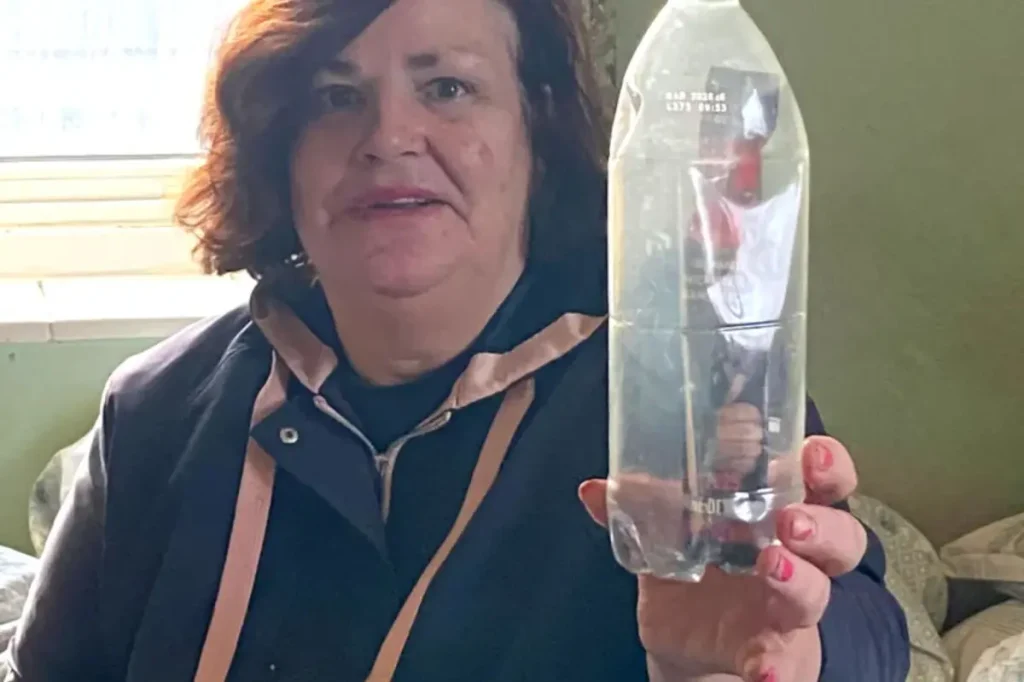Romantic Aspirations Meet Environmental Concerns: A Message in a Bottle Story
For 58-year-old Lorraine Forbes of Eastbourne, East Sussex, sending messages in bottles has been a cherished hobby spanning many years. Living by the seaside for three decades, Lorraine viewed this practice as a romantic gesture, a throwback to more whimsical times when connections formed through chance and serendipity. Her method was simple yet hopeful: write a heartfelt letter, place it inside a plastic bottle, and cast it into the sea from Eastbourne pier, dreaming that someone special might find it and respond. Over the years, her floating correspondence traveled impressively far, with responses coming from as distant as Holland and France. Though most of her bottles merely washed up on nearby shores, each launch represented Lorraine’s persistent hope for a romantic connection in an increasingly digital world.
The ritual carried a certain old-world charm that appealed to Lorraine’s romantic sensibilities. “I just wanted a bit of romance,” she explained, describing her bottle messages as an “old-fashioned thing” that contrasted with modern dating methods. Her choice of plastic over glass bottles was practical—they wouldn’t shatter during their journey across the waves. Lorraine would often send her messages in bulk from the pier, each one carrying her name and address in hopes that a kindred spirit might reply. While most who found and responded to her messages simply informed her where they had discovered the bottle rather than expressing romantic interest, Lorraine remained undeterred, finding joy in the process itself and the anticipation of where her messages might travel.
Recently, however, Lorraine’s romantic gesture collided with environmental concerns in an unexpected way. After sending out a message written on the back of a John Lydon gig flyer, she received what she described as a “nasty” response that left her deeply shocked. The reply came in a peculiar package—a box filled with rocks that cost her £9 ($9) to accept from postal services. Inside was a tersely worded note from an anonymous beach cleaner: “Please stop throwing rubbish in the sea. It goes to Pevensey Bay or Normans Bay, one day later. Many thanks, a rubbish picker.” The blunt message confronted Lorraine with the environmental impact of her romantic gesture, framing her bottles not as vessels of potential connection but as marine pollution.
The anonymous nature of the response particularly stung Lorraine, who felt the sender was “cowardly” for not including their name. “I think that it is really nasty. They were trying to make a point and teach me a lesson,” she remarked, frustrated that she had to pay to receive criticism. “If they had [included their name] I would demand that they give me my £9 back.” The exchange highlighted a growing tension between traditional romantic gestures and modern environmental consciousness. What Lorraine saw as a harmless pursuit of connection, the anonymous litter picker viewed as irresponsible behavior contributing to ocean pollution—a perspective that has gained significant traction as awareness of marine plastic pollution has increased in recent years.
This wasn’t the first time Lorraine’s bottle-sending hobby had raised concerns. Staff at Eastbourne Pier had previously admonished her about the potential impact on local wildlife, attempting to discourage her practice. These warnings, combined with the recent pointed response, began to shift Lorraine’s perspective on her long-standing hobby. The confrontation with the environmental implications of her actions made her consider the broader context of what she had viewed as an innocent romantic gesture. As plastic pollution in oceans has become a pressing global concern, practices once considered charming or harmless are now being reevaluated through an environmental lens, challenging traditional notions of romance and connection.
The incident has prompted Lorraine to reconsider her approach to seeking connection. “I probably won’t keep doing it,” she admitted, recognizing that her romantic pursuit carried unintended consequences. “This has made me realize that environmental health could find my letters with my name and address and I might get in legal trouble.” Her story captures a poignant intersection of changing times—where the romantic ideal of a message in a bottle clashes with contemporary environmental ethics. While Lorraine’s quest for connection through bottles cast to sea may be coming to an end, it raises important questions about how we balance personal desires with collective responsibility, and how we might find new ways to create meaningful connections that honor both human longing and environmental stewardship. Perhaps the most surprising connection formed was not a romantic one but rather a challenging dialogue about our impact on the natural world—a different kind of message, delivered in a most unexpected bottle.


